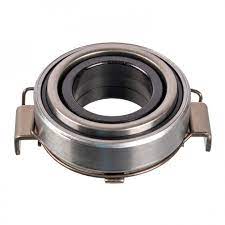Most drivers notice clutch issues only when shifting becomes difficult, the pedal feels stiff, or the gearbox starts making grinding noises. What many don’t realize is that these symptoms often point to a failing clutch release bearing—a small but essential component in the clutch system. When this bearing wears out, the damage doesn’t stop at the clutch. It can severely impact your transmission, pressure plate, and even the flywheel.
If your vehicle is showing noise, vibration, or jerky gear changes, addressing the root cause early can save thousands in repairs. This in-depth guide explains why the clutch release bearing is critical, how failure happens, the warning signs you should never ignore, and why choosing a high-quality bearing ensures smoother performance and long-term driveline protection.
Understanding the Role of the Clutch Release Bearing
What Is a Clutch Release Bearing?
A clutch release bearing (also called a throw-out bearing) enables smooth engagement and disengagement of the clutch. It applies pressure to the diaphragm spring of the clutch, allowing:
- Smooth gear shifting
- Reduced clutch pedal effort
- Vibration-free power transfer
- Quiet clutch operation
Without a properly functioning release bearing, the entire clutch mechanism becomes unstable.
How It Works in the Clutch System
When you press the clutch pedal:
- The clutch fork pushes the release bearing forward.
- The bearing presses against the pressure plate’s diaphragm spring.
- This action disengages the engine from the transmission.
- You can now shift gears smoothly.
Any wear, misalignment, or friction inside the bearing interrupts this entire process.
Common Problems Caused by a Failing Clutch Release Bearing
1. Gear Shifting Difficulty
A worn bearing struggles to apply even pressure, making shifting feel:
- Rough
- Sticky
- Delayed
This increases stress on the gearbox synchronizers.
2. Grinding or Whirring Noises
One of the earliest warning signs is noise when pressing the clutch pedal.
Typical sounds include:
- High-pitch squealing
- Grinding
- Rattling
These noises indicate internal bearing wear or lubrication loss.
3. Clutch Pedal Vibration
When the release bearing becomes uneven or damaged, it sends vibration back through the pedal, signaling imminent failure.
4. Overheating & Friction Damage
A failing bearing creates excessive heat, which affects:
- The clutch plate
- Pressure plate
- Diaphragm spring
- Transmission input shaft
Ignoring it can lead to complete clutch burnout.
5. Total Clutch Failure
If not replaced in time, the bearing can seize—making the clutch pedal inoperable and leaving the vehicle undriveable.
Why High-Quality Clutch Release Bearings Matter
Enhanced Durability
Premium bearings are made from heat-treated steel and designed to handle repeated high-pressure loads without deformation.
Smooth, Noise-Free Operation
Advanced lubrication and precision machining reduce friction, ensuring whisper-quiet clutch engagement.
Better Pedal Feel
A high-quality bearing ensures a lighter, more natural clutch pedal response.
Protects Other Clutch Components
A reliable bearing prevents premature wear of:
- Flywheel
- Pressure plate
- Clutch disc
- Transmission input shaft bearings
Consistent Performance Under Extreme Conditions
Whether used in daily driving, commercial vehicles, or performance applications, durability and temperature stability are essential.
Symptoms You Should Never Ignore
If you notice any of the following, your clutch release bearing may be failing:
- Noise when pressing the clutch pedal
- Difficulty shifting gears
- Pedal vibration or pulsation
- Burning smell from the gearbox area
- Jerking during gear engagement
- Pedal feels heavy or sticky
Early detection helps avoid expensive transmission repairs.
How Clutch Release Bearing Failure Happens
Normal Wear
Over time, constant pressure and friction naturally wear the bearing down.
Poor Driving Habits
Riding the clutch or keeping the pedal partially pressed accelerates bearing failure.
Low-Quality Bearings
Cheap, poorly manufactured bearings fail early due to:
- Low-grade steel
- Poor lubrication
- Inaccurate tolerances
Lack of Clutch Maintenance
Ignoring transmission noise or skipping inspections can lead to catastrophic breakdowns.
Industries and Vehicles That Rely on Reliable Clutch Release Bearings
Commercial Trucks
Heavy-duty clutch cycles require durable bearings to withstand constant pressure.
Passenger Cars
Smooth daily commuting depends on the bearing’s reliability.
Agricultural Machinery
Tractors and harvesters operate under high loads, demanding long-lasting components.
Construction Equipment
Machines like loaders and excavators rely on heavy clutch engagement.
A high-quality release bearing ensures consistent performance in all these environments.
Choosing the Right Clutch Release Bearing
When selecting a replacement bearing, ensure it offers:
- Precision-ground raceways
- High-temperature lubrication
- Corrosion-resistant materials
- OE-grade durability
- Compatibility with your clutch kit
These factors ensure longer life and improved clutch performance.
Conclusion
If your vehicle is showing clutch noise, shifting issues, or pedal vibration, addressing the problem early can prevent major driveline damage. A dependable clutch release bearing ensures smoother gear changes, better clutch engagement, and long-term protection for your transmission.
Explore premium replacement options and safeguard your vehicle from avoidable repairs. Choose a high-quality clutch release bearing today to restore smooth, quiet, and safe driving performance.
